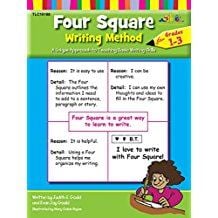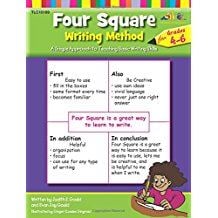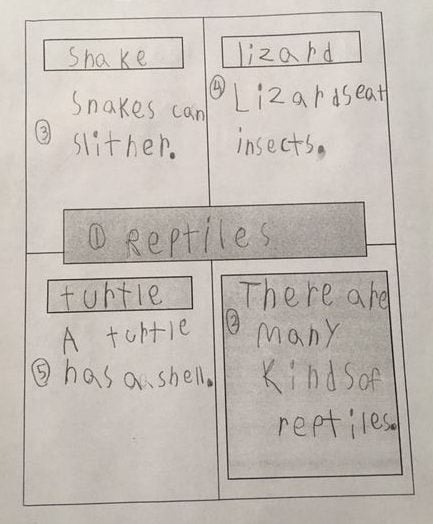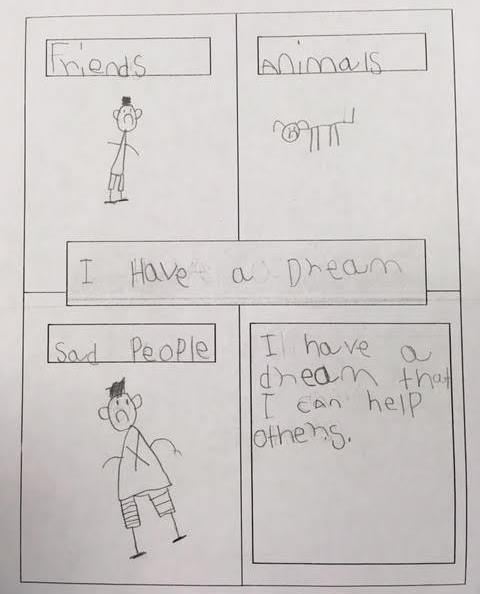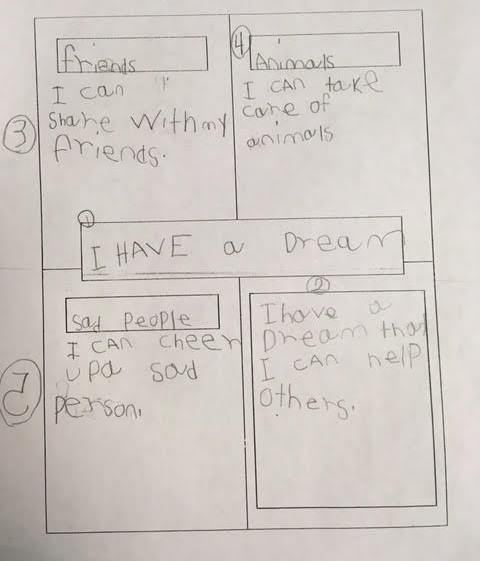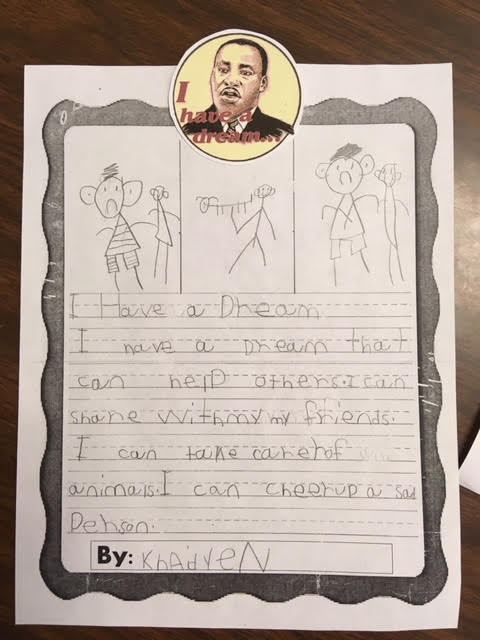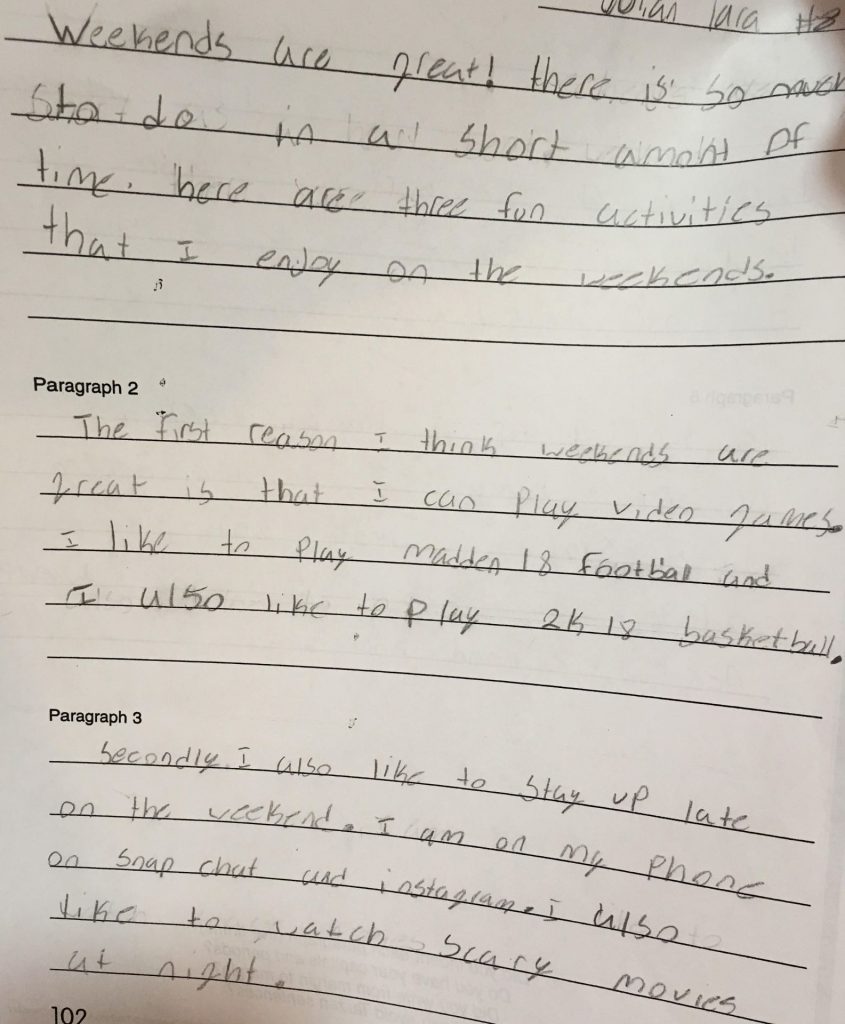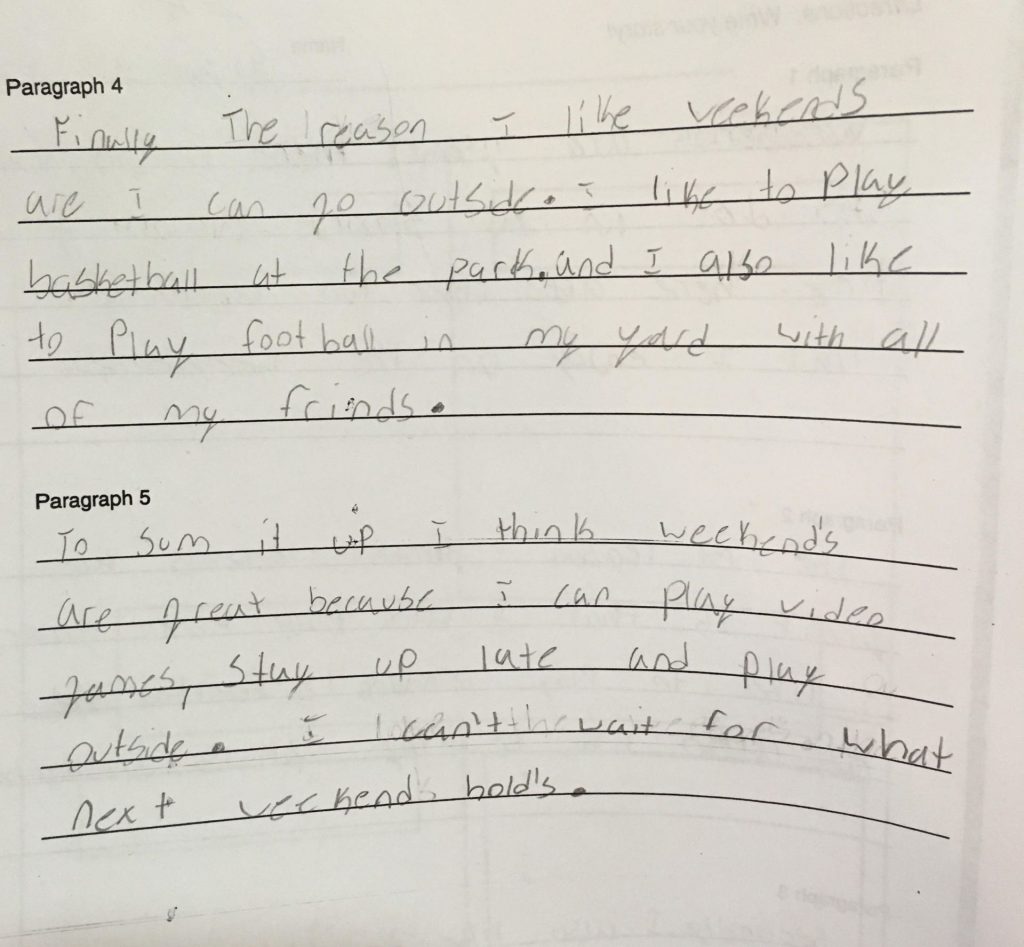by C. Elkins, OK Math and Reading Lady
One of my favorite models for organizing writing is the Four Square Model. I got the chance to attend a workshop conducted by the author of these books and I have been a fan ever since. This organizational model can be applied from KG to 5th grade (and beyond).
Four Square Writing:
Order HERE. It is developmentally appropriate to start with pictures for the youngest and gradually add sentences to explain the topic. For those who can write sentences, this model can help students build from a single five sentence paragraph (first and second grades) to the 5 paragraph essay (3rd and up). This model is great for expository, persuasive, and descriptive types of writing. For intermediate students, this format helps them organize the main idea, subtopics, details, and transition words.
- Students become better at seeing the relationship between the main topic and sub-topics such as: Fruit — apple, grape, cherry. I believe if students can write about a topic and the supporting details, then they can more easily recognize these in text. Description is one of the five main text structures.
- KG students start with pictures. Then young students (first or second) create a topic, 3 supporting details, and a beginning or concluding sentence to create a single paragraph.
- See this precious video from a first grade class showing how to use the four square method First Grade 4-Square Writing (Mr. Alba’s Class)
Thank you to teachers in Lawton for sharing some of the the work students did when I worked with them on use of this model. Here are a few samples (first and fifth grades):
Reptiles: This was a first grade class’s first attempt at using this model. Because it was the first time, we chose to do this whole group where we could more easily model the process. The students had been reading about different animal groups.
- Day 1 of writing:
- We listed animal groups on the board and chose reptiles to write about.
- Then we listed some different reptiles and selected 3 to write about (snake, lizard, turtle). Each of these subtopics were written inside the small box in the 3 squares. Students drew pictures.
- Then I guided them to write the sentence, which would eventually become our opening sentence.
- Day 1
- Day 2
- Day 2 of writing:
- We listed 2-3 statistics about each of the 3 reptiles and chose 1 to put into our writing.
- Via modeling and think-alouds (about sentence construction, spelling, spacing, capitalization, punctuation, etc.), students wrioe the sentences shown in the boxes.
- Each part was numbered 1-5 to show the order it would be written in paragraph form (Title, opening sentence, detail #1, detail #2, and detail #3).
- Day 3 of writing:
- Students copied the sentences in order on lined paper and added their pictures. I was not able to get a photo of the finished product. It would have read like this:
Reptiles
There are many kinds of reptiles. Snakes can slither. Lizards eat insects. A turtle has a shell.
I Have a Dream: This was another first grade class and their first attempt at using this model. The teacher wanted students to write about Dr. Martin Luther King, Jr. I based this writing on one of his quotes, “If I cannot do great things, I can do small things in a great way.” So we focused on small things they can do to make a difference as part of our pre-writing discussion.
- Day 1:
- We brainstormed ideas about how we can help others. From our list, we chose friends, animals, and sad people.
- These subtopics were added to the first three squares. Pictures were also added. With the pictures, students were able to show their interpretation of how they can personally help friends, animals, and sad people.
- We created an opening sentence in the fourth square. I wanted to frame it with an “I can . . .” message, so I guided this part.
- Day 1
- Day 2
- Day 2:
- I led a discussion on ways students can help a friend, help an animal, and help sad people. This was guided by how they chose to illustrate. Since we were doing this whole class, I chose a written response that applied to all students.
- Via think alouds and modeling, students then wrote a sentence in each square.
- Each part was numbered 1-5. (Read ahead about opening and closing sentence, etc.)
- Day 3: Students recopied their sentences in paragraph form and added pictures.
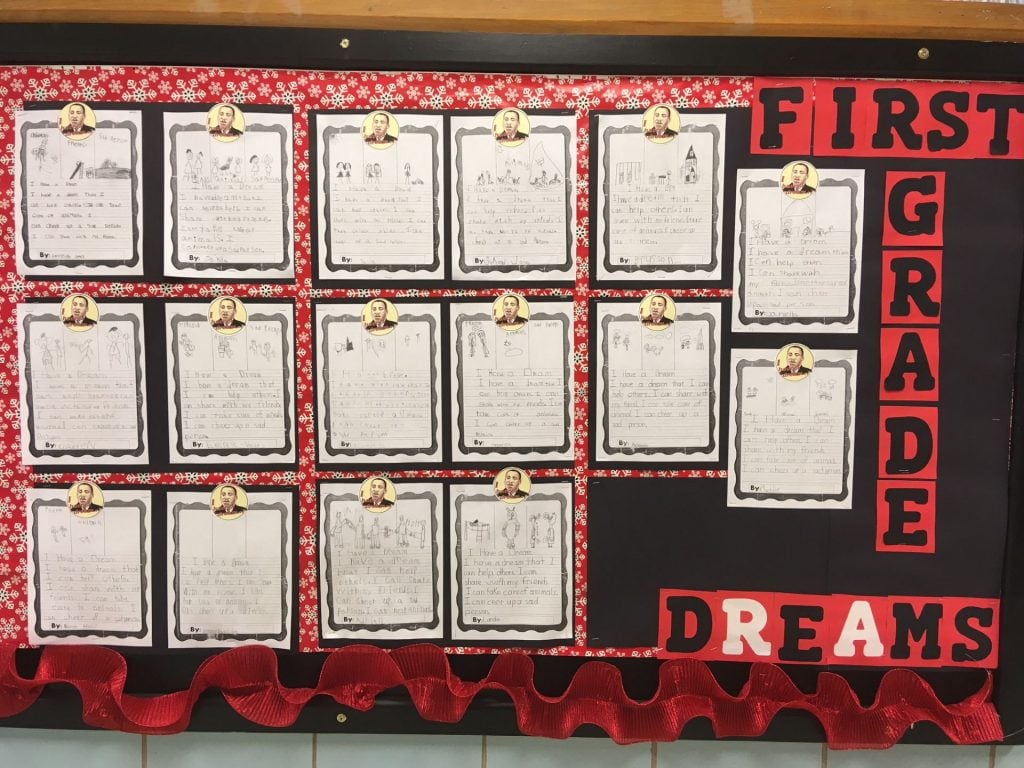
The typical four square model follows this order for a 5-paragraph format:
- The center box features the title and/or opening sentence, which is later developed into a full paragraph (Paragraph #1)
- Square 1 / Upper left: This becomes Paragraph #2
- Square 2 / Upper right: This becomes Paragraph #3
- Square 3 / Lower left: This becomes Paragraph #4
- Square 4 / Lower right: This becomes the conclusion — Paragraph #5
With beginning writers who were developing just one paragraph, I simplified the format as shown in the above 2 examples. As students continue to utilize this format in higher grades to write multiple paragraphs, we will utilize the order as in #1-5 above. Students will also realize that the opening and concluding paragraphs have a lot in common.
The next example will show the 5 paragraph format I worked on with a fifth grade class. Topic: Weekends are Great!
- Session 1:
- I showed students the steps involved in using the four-square template to organize their main idea and subtopics.
- I chose a main idea I thought would appeal to all students (weekends).
- We brainstormed things they enjoy doing on the weekend as I listed them on the board. Our list looked something like this: play games, play outside, listen to music, play video games, watch youtube, go out to eat with family, ride bikes, stay up late, hike, play with friends or siblings, etc.
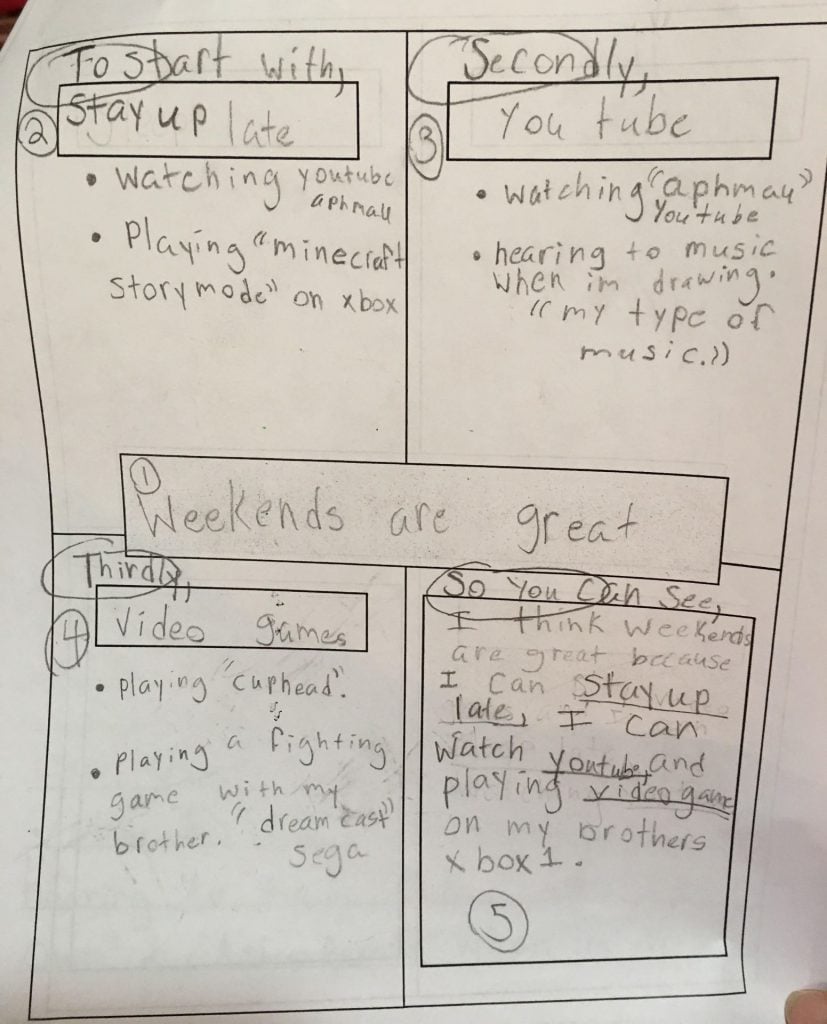
- Session 2:
- Using the four square template, students wrote the opening sentence in the center box (which will later be more fully developed into the opening paragraph).
- Then they chose 3 of their own distinct weekend activities to write as their subtopics for the other 3 squares. . . emphasizing no repetition. These were put inside the small boxes (ex: Stay up late, Youtube, Video games).
- We then worked on a template to form the concluding paragraph (fourth square). It said, “I think weekends are great because I can _______, _________, and __________.” It was also expanded more in the last step.
- Session 3:
- Students added 2-3 supporting details to the first three squares. This often involved me questioning them to get them to expand. . . and modeling with my own example to show how these will eventually become sentences.
- Transition words were added to the beginning of each square. We listed which ones were appropriate for beginning, middle and ending paragraphs (First, To start with, Secondly, In addition to, Thirdly, Finally, In conclusion, etc.). You will see the transition words added to the top of each square.
- We discussed addition of more vivid details to make their “voice” come through (and appeal to the senses, use of figurative language, metaphors, etc.). BUT, because this was our first attempt, I didn’t put too much emphasis on this . . . I didn’t want to freak them out or make them dread this because so far they were all so engaged in telling about their favorite things to do on the weekend!!
- Session 4:
- I gave students a 5 paragraph form (available in the book). It’s just labeled “paragraph 1, 2, etc.). Together, we wrote “Weekends are great!” as the only sentence in paragraph 1. This was expanded on later.
- On to paragraph 2: Students use what’s in their first box, starting with the transition words and then transforming their subtopic and bulleted details into sentences. It seemed natural to put each of these into a complete sentence. Of course, I used my own example as a model (both verbally and in writing) before they attempted theirs.
- Paragraphs 3 and 4 were done the same way.
- Paragraph 5: Students copied what was already written in box 4. Then a more personal statement was added to expand it.
- Expansion of first paragraph — see student sample.
- Session 5:
- Proofreading and corrections were done.
- Overused words were replaced.
Here’s another student’s piece (not completely edited). He has all of the required elements. With more time I would definitely provide some mini-lessons on varying sentence beginnings and substituting overused words.
Next post I will focus on the Six Traits of Writing model and how it can help students improve their writing skills. I’ll also include some tips on how to get students to be more descriptive and detailed with their sentences. That will be the final writing post (for this year at least).
